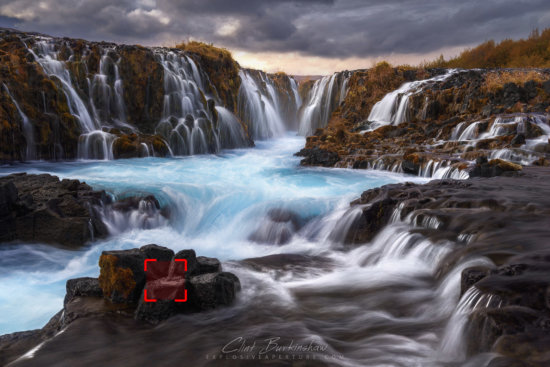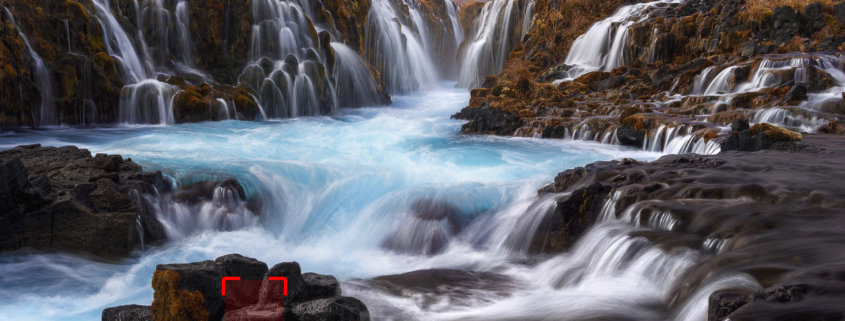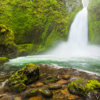Mastering Single-Point Focus Setting in Nature Photography
Modern digital cameras offer a variety of autofocus settings tailored to different photography styles—from wildlife and portrait photography to sweeping landscapes and macro scenes. Understanding when and how to use single-point focus is critical for nature photographers who demand precision and control in their images. This article explores the advantages of single-point focus, when to use it, and how it compares with other focus settings available on today’s cameras.
Why Your Camera Offers Different Autofocus Modes
Modern DSLR and mirrorless cameras come equipped with a range of autofocus (AF) modes, including single-point AF, zone AF, wide-area AF, and tracking AF. These modes are designed to suit various shooting scenarios:
Single-point AF
Offers pinpoint precision by allowing you to manually select a specific focus point within your camera’s viewfinder. It eliminates the guesswork that comes with letting the camera decide and is especially useful in high-detail compositions where selective focus is critical. For macro, portrait, and fine-art nature photography, single-point AF is often the go-to setting when the smallest shift in focus can make or break the image.
Zone and wide-area AF
This autofocus modes divide the viewfinder into a group or region of multiple focus points, allowing the camera to intelligently choose the sharpest object within that area. These modes are designed for speed and responsiveness rather than pinpoint accuracy. They are ideal for photographing fast-moving wildlife, sports action, or dynamic natural scenes, such as birds in flight or running animals. The camera automatically evaluates contrast, motion, and proximity to select an appropriate focus point within the defined zone, which increases your chances of getting a sharp shot when tracking unpredictable motion. However, they offer less control over exactly what part of your subject will be in focus.
Tracking or continuous AF (AF-C on Nikon/Sony or AI-Servo on Canon)
Tracking autofocus is a continuous autofocus mode that dynamically adjusts focus as your subject moves within the frame. Combined with single-point or zone AF, it allows you to “lock on” to a moving subject—such as a fox running across a field or a hummingbird approaching a flower—and maintain sharp focus even as the distance between the camera and subject changes. This mode is essential for shooting wildlife on the move, active pets, or fleeting natural behaviors. It’s especially powerful on modern mirrorless cameras with AI subject detection, which can recognize eyes, heads, or animals and keep them in focus with impressive accuracy.
Different photography genres require different focusing techniques. Wildlife photographers deal with fast movement, while landscape photographers aim for front-to-back sharpness using techniques like focus stacking or hyperfocal distance. Knowing how to choose the right focus mode is essential for capturing professional-quality nature images.
What Is Single-Point Focus Mode?
Single-point autofocus (AF-S or One-Shot AF with a single AF point selected) lets you manually choose where in your frame the camera should focus. It’s ideal for situations that demand precision, such as:
- Focusing on a subject’s eye in wildlife or portrait photography
- Isolating specific foreground or midground elements in a landscape
- Setting precise focus for macro photography or small subjects
By manually selecting the focus point, you gain control over the focal plane—an essential factor in creating intentional, sharp compositions.
When to Use Single-Point Focus for Nature Photography
- Capturing Sharp Wildlife Portraits
In wildlife photography, sharp focus on the animal’s eye adds emotional impact and professional polish. Single-point focus lets you place the focus exactly where it matters most, especially when using a shallow depth of field. - Isolating Subjects in Complex Natural Scenes
When your scene is full of fine details—branches, flowers, rocks—autofocus may struggle. Single-point focus allows you to isolate one subject clearly, ensuring that your chosen element is sharp against a busy background. - Using Single-Point for Landscape Focus Stacking
Focus stacking involves taking multiple images at different focus distances and blending them in post-processing. With single-point focus, you can target each specific focus area, ensuring maximum sharpness from foreground to background. - Maintaining Control in Changing Light or Framing
You can move your focus point to match your composition—top third, bottom third, or anywhere your subject lies. Some cameras even allow you to adjust the size of your focus point for extra precision or flexibility.
One-Shot vs. Continuous Autofocus with Single-Point
Pairing single-point autofocus with the appropriate focus mode is essential for achieving consistently sharp images in nature photography. The right combination depends on whether your subject is stationary or in motion.
- One-Shot AF + Single-Point Focus is ideal for stationary subjects such as flowers, rocks, or perched birds. In this mode, the camera locks focus when you half-press the shutter, allowing you to recompose without refocusing. It’s a great choice when both you and your subject are still, and it works especially well when shooting from a tripod. You can also manually verify sharpness by magnifying the image on your LCD screen before capturing the shot—ensuring focus is nailed exactly where you want it.
- Continuous AF (AF-C or AI-Servo) + Single-Point Focus is best for moving subjects, like a bird in flight or a lioness walking through tall grass. In this mode, the camera continuously adjusts focus as long as the shutter is half-pressed, tracking the subject even as it moves toward or away from you. This dynamic focusing capability helps avoid the blurred results you’d get if using One-Shot AF in fast-moving scenarios.
Keep in mind that focus hunting—where the lens searches for sharpness—can occur in continuous modes, especially in low-contrast or cluttered scenes. While modern cameras have greatly improved in handling these situations, if your subject is not moving, One-Shot AF remains the more stable and reliable option. It stops focusing once it finds the optimal sharpness, giving you peace of mind when precision is critical.
By understanding how and when to combine single-point AF with either One-Shot or Continuous modes, you can better adapt to different shooting environments and capture nature with clarity and intent.
When to Use Manual Focus in Nature Photography
Manual focus becomes essential when autofocus systems struggle—particularly in low-light conditions, macro photography, or when shooting through obstructions like branches, fences, or grass. In these situations, you can switch to manual mode, mount your camera on a tripod, and use your camera’s LCD magnification assist feature to zoom in and precisely adjust focus on your intended subject.

Focusing on on the foreground rock while using a combination of a narrow aperture to maximize the depth of field from the foreground to the back cascades in a single frame.
This method is especially valuable when calculating the hyperfocal distance in landscape photography, where maximizing depth of field is crucial. Manual focus gives you full control over what’s sharp in your scene, allowing you to include exactly what you want in focus with no reliance on the camera’s autofocus algorithms.
Pro Tip: A helpful hybrid technique is to first use One-Shot AF combined with single-point focus to quickly acquire sharp focus. Then, zoom in on your LCD and manually adjust the lens’s focus ring to fine-tune or verify perfect sharpness. This approach blends speed with precision—ideal for capturing tack-sharp nature images.
Adapting Your Focus Point to the Scene
In dynamic environments—like coastlines with crashing waves, dense forests, or fast-paced wildlife scenes—it’s important to adjust your focus point to match the composition rather than constantly reframing. Instead of locking focus and shifting the camera, you can move your single-point AF to the exact area of interest—such as the top, bottom, or side third of the frame—before capturing the shot.

A focus stack of two separate shots, using multiple focus points. Both selected via single-point focus.
This technique allows you to maintain your intended composition while ensuring the focus stays precisely on your subject, even as the scene changes. Whether you’re photographing a sweeping seascape or an animal stalking through grass, positioning your AF point in advance helps you react quickly and accurately—without the need for awkward, on-the-fly adjustments.
Why Single-Point Focus Belongs in Your Nature Photography Toolkit
Single-point autofocus is a must-know skill for nature photographers. It gives you full control over what’s sharp in your image and helps avoid common autofocus errors that can ruin a shot.
When combined with modes like continuous AF or manual fine-tuning, this setting allows you to adapt to both fast action and delicate compositions. Whether you’re capturing a lioness in motion or a flower in still air, single-point focus is your go-to for sharp, professional-quality photos.
Mastering your camera’s focus settings isn’t just technical—it’s foundational to telling compelling visual stories through nature photography.
Original Article Published in May 2016.











